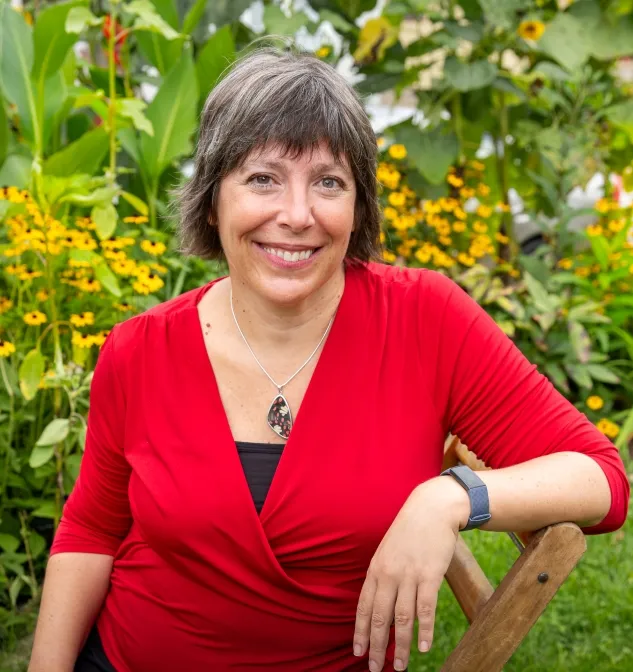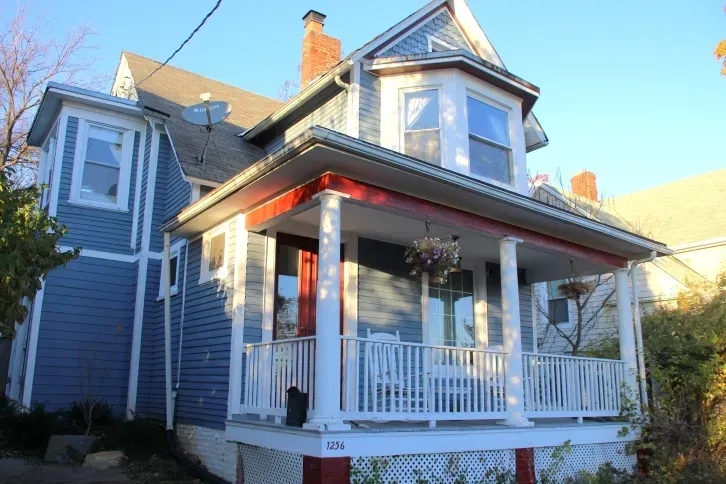Early in her career, Susan Ferentinos worked as a public historian with a personal interest in the LGBTQ+ past. Recently, the Port Townsend- based researcher, widely considered an expert in American Queer history, authored two nominations for landmarks with African American LGBTQ+ significance for the Historical Landmark Nomination Committee meeting in May.
.

The nominations for the Azurest South in Virginia and Slowe-Burrill House in Washington, DC, mention that both buildings have a place in Black Queer feminist history; in addition, the former has distinctive architectural features.
Ferentinos worked for and with the National Parks Service since 2016 with limited grant funding to compile cases for both buildings to be considered as landmarks. The properties were already included on the national registry of historic places; however, neither site was approved within the lens of their LGBTQ+ impact. When Ferentinos set out to nominate the sites with other National Park historians, she wanted to change the prevailing narrative.
"It was clear to... us that... if we were not convincing people of that, then the failure of that was in my writing, not in the character of the property," she said

As a member of the LGBTQ+ community and a passionate researcher, Ferentinos considered the nominations to be a personal milestone. She believes that the historical significance of the two sites is important to Queer history in their own right regardless of their final designations.
The Slowe-Burrill House was owned and occupied from 1922 to 1937 by Lucy Diggs Slowe, an African American professor of English and dean of women at Howard University. Slowe, joined by her romantic partner Mary Burrill, was an advocate for racial, gender, and sexuality equality at the university.
Azurest South was designed and occupied by Amaza Lee Meredith from 1939 until 1984. Meredith was an African American professor of architecture at Virginia State University and made undocumented modifications to the building over the decades. Alongside her romantic partner, Edna Meade Colson, she created a refuge for others at their estate. The modernist Azurest South stood out from the surrounding architecture at Virginia State University (where Meredith taught), which features a cookie-cutter federalist style.
"The fact that Amaza Lee Meredith had the vision for a modernist building, and that it was a private residence as opposed to a public space, is pretty distinctive for that place and that time," Ferentinos said.
Azurest South was built directly across from the VSU administrative building, in defiance of the dean. "It was a really rough time to be African American or Queer in Virginia. And the fact that this couple was drawing attention to themselves and really going against the grain by building this property and living in it openly as a couple I really felt that it was worthy of federal recognition."
Much of the historical landmark nomination was influenced by Jacqueline Taylor's biography of Meredith titled Amaza Lee Meredith Imagines Herself Modern. Published in the fall of 2023, it brought more attention to Azurest South. In the preamble, Taylor writes, "Seeing the house for the first time, I was struck by its idiosyncratic character, particularly in this location."
The National Landmark Nomination criteria required Ferentinos to determine how true the building remained to the historical context.
"The trick is determining if it still retains an acceptable amount of integrity," Ferentinos said. She took photos and consulted with experts to make that determination. "That is always a big conversation, and with both of those properties, there had been fairly significant changes... I was doing the on-the-ground work, but I was hired by the National Park Service, so I had preservation staff who were looking at the photographs I had taken and weighing how to approach the [issue of] integrity."
Another nomination at the May meeting not authored by Ferentinos pertained to American LGBTQ+ history. The Boulder County Courthouse issued six marriage licenses to same-sex couples in 1975, which inspired national backlash against Gay rights in the late 1970s.
The sites have not yet made it through the full process of becoming National Historical Landmarks. After the May meeting, the recommendation for approval will go to the Parks Service advisory board to be voted on. The final decision is made by Secretary Deb Haaland of the Department of the Interior.
Support the Seattle Gay News: Celebrate 50 Years with Us!
As the third-oldest LGBTQIA+ newspaper in the United States, the Seattle Gay News (SGN) has been a vital independent source of news and entertainment for Seattle and the Pacific Northwest since 1974.
As we celebrate our 50th anniversary, we need your support to continue our mission.
Your contribution will ensure that SGN remains a beacon of truth and a virtual gathering place for community dialogue.
Help us keep printing and providing a platform for LGBTQIA+ voices.
How you can donate!
Using this Link
Text "SGN" to 53-555
Or Scan the QR code below!



